You are here: Books --> Effective Onscreen Editing 4th edition --> Word 2016 Appendix 1: Backups
Vous êtes ici : Livres --> Effective Onscreen Editing 4th edition --> Word 2016 Appendix 1: Backups
Appendix 1: Backups
Brasington’s laws of backups: “You will never use the backup copy you just made. The only backup copy you will ever need is either the one you didn’t have time to make, or the one you did make but cannot read. There is no danger in x-raying a disk or tape, but a Boy Scout’s magnet can destroy the only copy of a file at 50 yards.”
Software and reference links for all versions of Word
This Web page contains instructions on the following subjects:
AutoCorrect locations
Backing up the Windows Registry
Copying macro text manually
Finding and changing file locations
Finding your custom dictionaries
AutoCorrect locations
You can use Windows File Explorer (under the Start menu) to find your AutoCorrect files, which are stored in C: > Users > [your name] > AppData > Roaming > Microsoft > Office. Note that the path to get to this directory is displayed at the top of the dialog box:
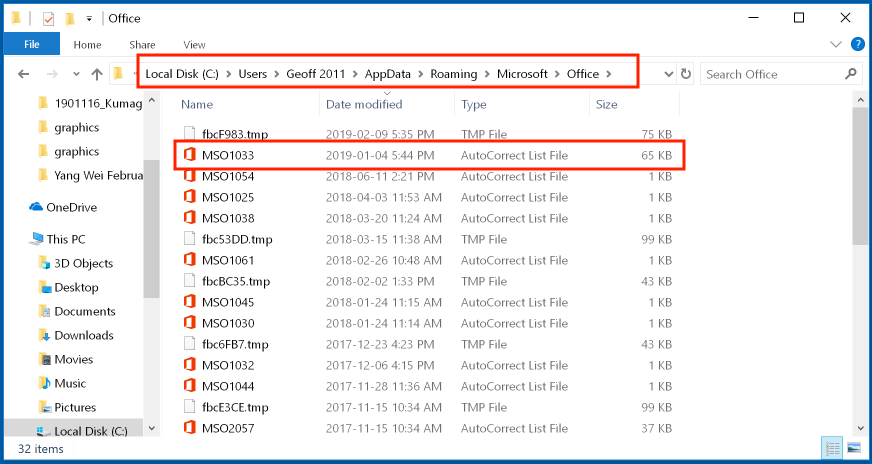
There’s one file per language. If you’re working in U.S. English, the file you’re looking for is named MSO1033.ACL. (Note that the .ACL filename extension is only visible if you have configured Windows to display these extensions.) The other AutoCorrect files in this directory are for other languages. To learn which number is associated with a given language, consult Microsoft’s knowledgebase article "List of supported locale identifiers in Word"
Backing up the Windows Registry
The Windows Registry stores many obscure settings for how your computer operates, including some settings that define how Word functions. How to Geek explains what you need to know in their article “How to backup and restore the Windows registry”.
Copying macro text manually
If you want to copy macro text manually (e.g., for reuse in another macro), you must first display the macro. To do so, select the Ribbon's "View" tab, open the menu below the "Macros" icon, and then select "View Macros":

In the "Macros" dialog box, select the macro whose text you want to inspect and click the Edit button to display the macro in Word’s macro editor:
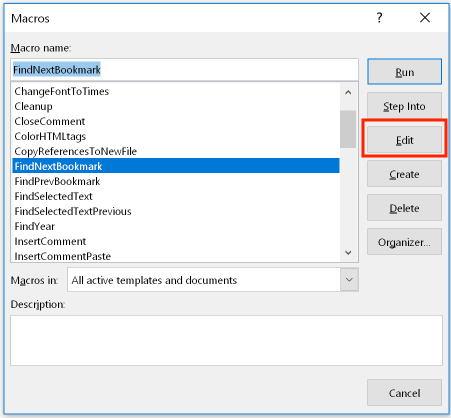
In the macro editor, drag the mouse cursor (or hold down the Shift key and move downwards with the arrow keys) to select all or (here) part of the code:
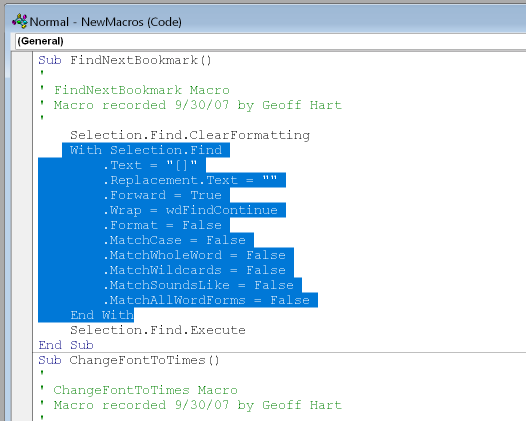
Once the lines of code have been selected, you can copy the code (Control+C) and paste it (Control+V) into another macro or into a Word document for safekeeping. When you're done, quit the macro editor by pressing Alt+F4.
Finding and changing file locations
To find the location of key files such as your document templates, open the File menu and select "Options". In the "Word Options" dialog box, select the "Advanced" tab, then scroll to the bottom of this group of settings to find the "General" heading and the "File Locations" button:
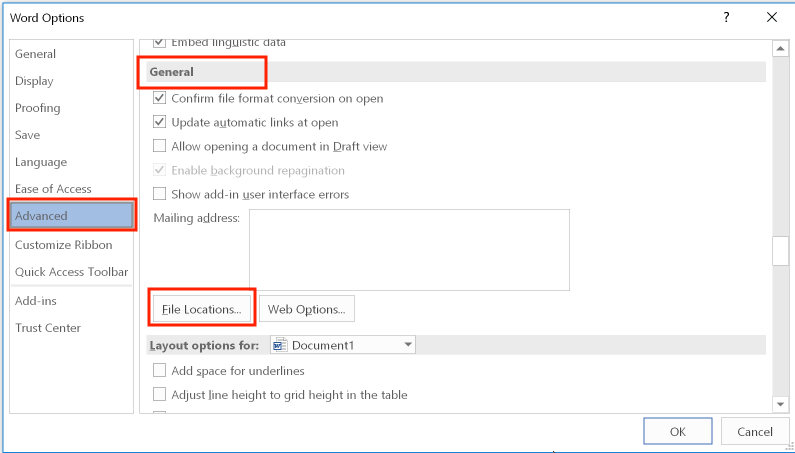
Click the "File Locations" button to display the locations of the key file types Word uses. To change the location where a given type of file is stored, select the file type and then click the "Modify" button:
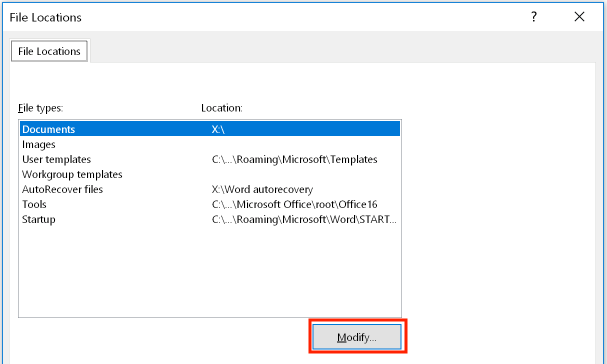
You can now use the standard tools provided by the Windows File Explorer to specify the location of a group of files:
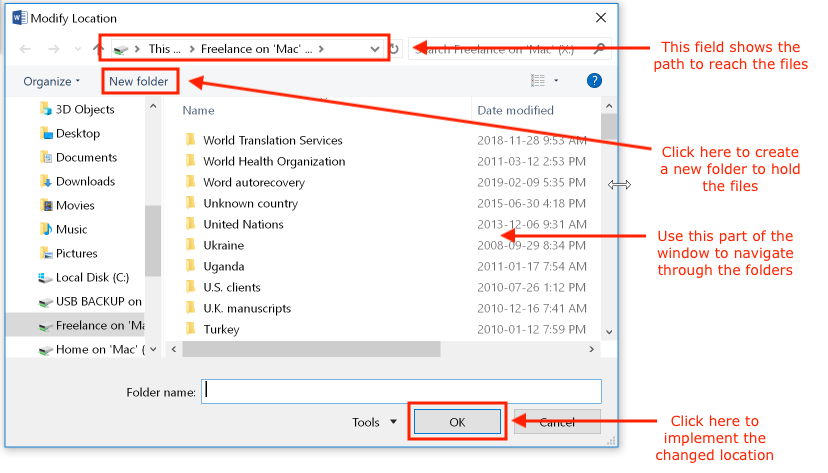
Finding your custom dictionaries
To find the location of your custom dictionaries, open the "File" menu and select "Options". In the "Word Options" dialog box, select the "Proofing" tab, and then click the “Custom Dictionaries” button:

Select the dictionary whose path you want to learn. The path appears at the bottom of the dialog box in the “File path” field:
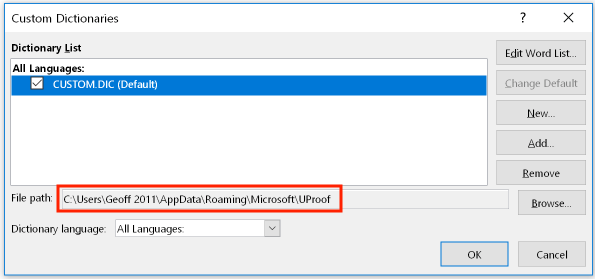
In Windows, this is typically C:\Users\[your name]\AppData\Roaming\Microsoft\UProof.
©2004–2025 Geoffrey Hart. All rights reserved.








